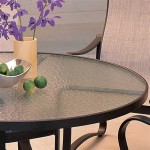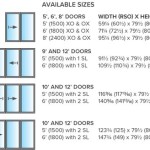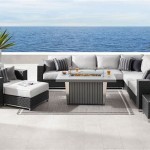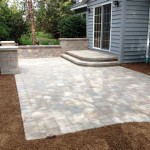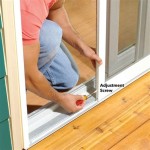Best Rated Patio Furniture: A Comprehensive Guide
Selecting the appropriate patio furniture is a crucial step in transforming an outdoor space into a comfortable and inviting extension of a home. The best-rated patio furniture not only enhances the aesthetic appeal of a deck, garden, or balcony but also provides durable and functional seating and dining options for relaxation and entertainment. This article aims to provide a comprehensive overview of factors to consider when choosing patio furniture, highlighting key features, materials, and styles that contribute to high ratings from consumers and experts alike.
Understanding Material Durability and Climate Considerations
The longevity and performance of patio furniture are highly dependent on the materials used in its construction. Different materials offer varying degrees of resistance to weather elements such as sun, rain, wind, and temperature fluctuations. Choosing the right material is paramount for maximizing the lifespan of outdoor furniture and minimizing maintenance requirements.
Aluminum: Aluminum is a popular choice due to its lightweight nature and resistance to rust. Powder-coated aluminum is particularly durable, offering enhanced protection against scratching and fading. It is suitable for various climates, but darker colors can absorb more heat, potentially making them uncomfortable in sunny locations. Aluminum furniture is generally easy to clean and maintain, requiring only occasional washing with soap and water.
Wicker: Wicker refers to the weaving process rather than a specific material. Natural wicker, made from materials like rattan and bamboo, is aesthetically pleasing but less durable for outdoor use. Synthetic wicker, often made from resin or polyethylene, is far more resistant to moisture, UV rays, and insects. High-quality synthetic wicker can withstand the elements for many years with minimal maintenance. Opting for UV-resistant synthetic wicker is especially important in areas with intense sunlight.
Teak: Teak is a hardwood known for its exceptional durability and natural resistance to decay, insects, and water. It contains natural oils that protect it from the elements, making it an excellent choice for outdoor furniture. Teak will naturally weather to a silver-gray color over time unless treated with teak oil or sealant. While teak furniture is a significant investment, its longevity and inherent beauty make it a worthwhile choice for many homeowners. Regular cleaning with a mild detergent and water can help maintain its appearance.
Steel: Steel is a strong and durable material that can withstand significant weight. However, untreated steel is susceptible to rust. Powder-coated steel offers a protective layer against corrosion, making it suitable for outdoor use. Steel furniture can be heavier than aluminum, providing stability in windy conditions. It's important to inspect powder-coated steel regularly for any chips or scratches, as these can expose the underlying steel to moisture and lead to rust. Touch-up paint can be used to repair minor damage.
Plastic: Plastic furniture is a cost-effective option that is available in a wide range of styles and colors. High-density polyethylene (HDPE) is a particularly durable type of plastic that is resistant to fading, cracking, and warping. Plastic furniture is lightweight and easy to clean, making it a practical choice for casual outdoor settings. However, lower-quality plastic furniture may become brittle and susceptible to damage from prolonged exposure to sunlight.
When selecting patio furniture, consider the specific climate and environmental conditions of the location. Coastal areas with high humidity and salt air require materials that are highly resistant to corrosion. Arid climates with intense sunlight necessitate materials that are UV-resistant to prevent fading and cracking. Regions with significant temperature fluctuations require materials that can withstand expansion and contraction without warping or becoming brittle.
Evaluating Comfort and Ergonomics
Beyond durability, the comfort and ergonomics of patio furniture are critical factors influencing user satisfaction. Furniture that is aesthetically pleasing but uncomfortable will likely be used less frequently. Focus should be given to factors such as seat height, back support, cushioning, and overall design to ensure a comfortable and relaxing outdoor experience.
Seat Height and Depth: The ideal seat height allows users to sit comfortably with their feet flat on the ground. A seat that is too high or too low can strain the legs and back. Seat depth should also be considered, as a seat that is too deep can make it difficult to sit upright comfortably. For dining chairs, the seat height should be appropriate for the table height, allowing ample legroom.
Back Support: Adequate back support is essential for maintaining a comfortable posture. Chairs with contoured backs or lumbar support can help prevent back pain and fatigue. For lounge chairs, adjustable backrests allow users to customize their seating position for optimal relaxation. Consider the angle of the backrest and the presence of lumbar support when evaluating the comfort of a chair.
Cushioning: Cushions play a significant role in the comfort of patio furniture. The quality of the foam and the fabric used in the cushions can impact their durability and resistance to moisture and fading. High-density foam cushions provide better support and retain their shape longer than low-density foam cushions. Fabric options include solution-dyed acrylic, which is highly resistant to fading and staining, and polyester, which is a more affordable but less durable option. Look for cushions that are water-resistant or water-repellent to protect them from moisture damage.
Ergonomic Design: Ergonomic design focuses on creating furniture that supports the natural curves of the body and reduces strain. Features such as armrests, footrests, and adjustable headrests can enhance comfort and promote relaxation. Consider the overall shape and design of the furniture and how it conforms to the body when evaluating its ergonomic qualities.
It's advisable to test patio furniture before purchasing it, if possible. Sitting in chairs, lounging on sofas, and testing the stability of tables can provide valuable insights into their comfort and functionality. Reading online reviews and seeking recommendations from other consumers can also help assess the comfort and ergonomics of different furniture options.
Assessing Style and Design Integration
The style and design of patio furniture should complement the overall aesthetic of the outdoor space and the architectural style of the home. Cohesive design creates a visually appealing and harmonious environment that enhances the enjoyment of the outdoor area. Considering the existing landscape, color palette, and architectural features is essential when selecting patio furniture.
Contemporary Style: Contemporary patio furniture often features clean lines, minimalist designs, and neutral colors. Materials such as aluminum, steel, and synthetic wicker are commonly used in contemporary furniture. These styles emphasize simplicity and functionality, creating a sleek and modern outdoor space.
Traditional Style: Traditional patio furniture typically incorporates classic designs, ornate details, and rich colors. Wrought iron, teak, and wicker are common materials used in traditional furniture. These styles often feature curved lines, intricate patterns, and a sense of timeless elegance.
Coastal Style: Coastal patio furniture is characterized by light colors, natural materials, and nautical accents. Wicker, teak, and painted wood are commonly used in coastal furniture. These styles evoke a sense of relaxation and tranquility, creating a breezy and inviting outdoor space.
Bohemian Style: Bohemian patio furniture embraces eclectic designs, vibrant colors, and unconventional materials. Rattan, macrame, and patterned fabrics are commonly used in bohemian furniture. These styles emphasize self-expression and individuality, creating a unique and vibrant outdoor space.
Design Integration: Integrate patio furniture into the existing landscape by considering the surrounding plants, trees, and architectural elements. Choose colors and materials that complement the natural environment and create a sense of harmony. Incorporate outdoor rugs, cushions, and accessories to add texture, color, and personality to the space. Consider the scale of the furniture in relation to the size of the outdoor area. Overly large furniture can overwhelm a small space, while small furniture can get lost in a large space.
Ultimately, the best-rated patio furniture combines durability, comfort, and style to create a functional and aesthetically pleasing outdoor space. By carefully considering the materials, ergonomics, and design of patio furniture, homeowners can transform their outdoor areas into inviting and enjoyable extensions of their homes.

The Best Patio Furniture And How To For It Reviews By Wirecutter

The Best Patio Furniture And How To For It Reviews By Wirecutter
The 13 Places To Buy Patio Furniture And Outdoor In 2024

13 Best Outdoor Sectionals 2024 Top Rated Couches For Patio

12 Best Outdoor Sectionals Of 2024 Sectional Patio Furniture

The Best Outdoor Furniture S To Upgrade Your Patio

22 Best Patio Furniture Sets Of 2024 Affordable Outdoor Items

The Best Patio Furniture And How To For It Reviews By Wirecutter
:max_bytes(150000):strip_icc()/GUEST_5b8e6b4c-cff5-468f-822b-5daf5f64c820-83cace123101435c90b1d39da13cde91.jpg?strip=all)
The Best Outdoor Furniture For Small Spaces

Patio Furniture Save On Top Rated Sets At This Event
Related Posts

